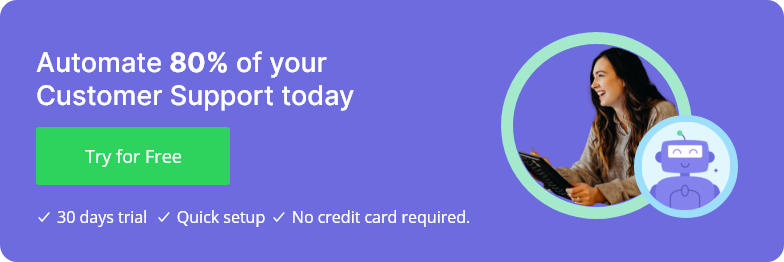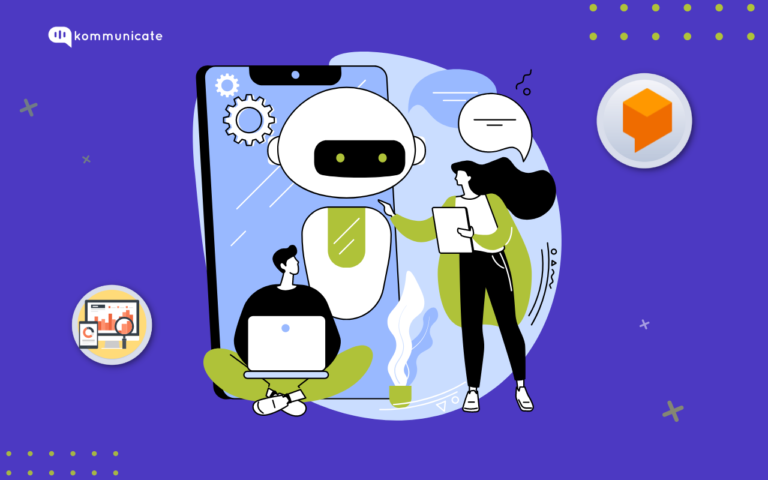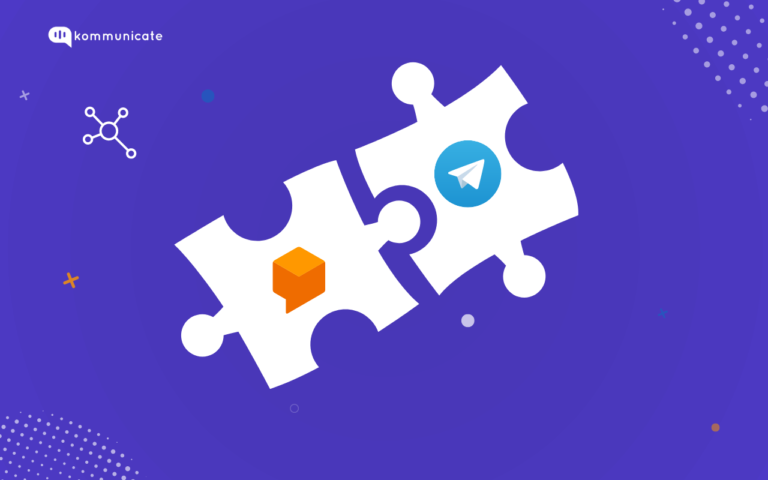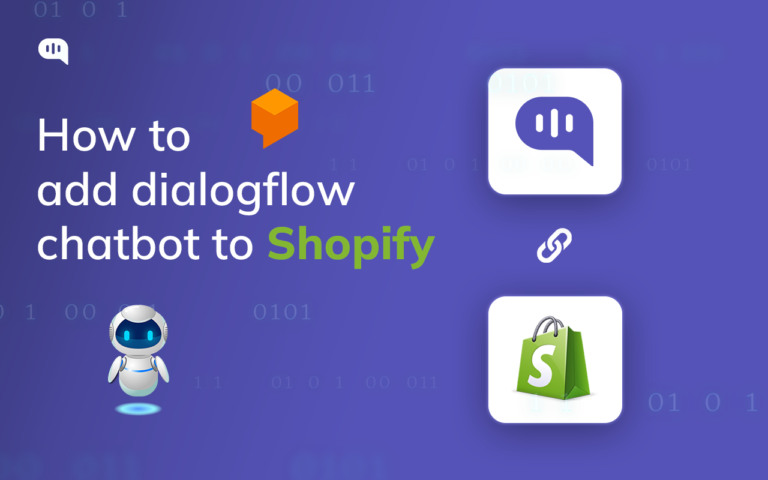Updated on January 20, 2025

The bot to human hand-off plays an important role in customer support. When a chatbot can’t understand a customer’s question and fails to provide an answer, handing off the conversation to a human agent becomes crucial.
Imagine visiting a website with a chatbot that keeps repeating the same unhelpful response to your question. This can be frustrating and might make you leave the site. Similarly, if your website’s chatbot does not quickly connect the customer to a live agent in such situations, it can lead to dissatisfaction, harm your company’s reputation, and potentially reduce your revenue.
Therefore, your chatbot should be smart enough to identify when it should hand off the conversation to a human agent ensuring a smooth and seamless experience for the user.
Dialogflow Bot Builder
Google’s Dialogflow is one of the most popular AI Chatbot platforms that helps to build conversational interfaces for websites, mobile applications, messaging platforms, and IoT devices. Developers particularly like using Dialogflow due to its user-friendly design, extensive integration capabilities, and robust natural language processing (NLP) engine.
Here are some specific features that make Dialogflow appealing –
Ease of Use
Dialogflow offers a visually intuitive interface and no-code options that simplify the creation of chatbots. This lowers the barrier to entry for developers and non-developers alike.
Comprehensive NLP Capabilities
Powered by Google’s machine learning expertise, Dialogflow excels at understanding and processing human language, allowing it to handle complex queries more effectively.
Cross-Platform Compatibility
Developers can deploy their chatbots across a wide array of platforms including Google Assistant, Facebook Messenger, and Slack with minimal changes to the underlying code.
Scalability
Built on Google Cloud, Dialogflow can effortlessly scale to handle a large number of interactions, making it suitable for both small businesses and large enterprises.
Rich Integrations
Dialogflow integrates seamlessly with other Google services and third-party applications, which enhances its functionality and allows for the creation of more sophisticated bots.
Handing-Off a Conversation to a Human Agent in Dialogflow
While a chatbot is able to effectively handle any generic and repetitive queries with ease, there are some scenarios where it is best to transfer the conversation to a human agent. Dialogflow provides this capability to ensure that more complex, sensitive, or specific customer issues are addressed with the necessary human touch.
Here are a few key features in Dialogflow that allows developers to set-up this human handoff –
- Intents and Contexts: You can define specific intents that, when triggered, signal the need for human intervention. For instance, if a user expresses dissatisfaction or asks for a human, the chatbot can recognize these cues.
- Fulfillment Webhooks: By using fulfillment webhooks, Dialogflow can execute server-side logic that facilitates the switch from the chatbot to a live agent. This logic can involve notifying a customer service team, opening a ticket, or connecting the user to a human via a live chat platform.
- Integration with Live Support Systems: Dialogflow can integrate with various customer support platforms and CRM systems. This integration ensures that when a handoff occurs, the human agent has access to the previous conversation history and user data, allowing for a smooth and informed transition.
Let’s look at some of these hand-off scenarios and how to set it up in Dialogflow –
1. Complex User Queries
Usually, the chatbots are trained to help the users with answering their basic queries. If the end-users issue is complex and the chatbot is not able to provide any solution then it should involve a human agent to help the end-user with the complex issue.
Suggested read: 4 simple steps to add dialogflow chatbot into your website.
In dialogflow, the action “input.unknown” used to handoff the conversation to a support agent. Whenever action “input.unknown” is detected in the response, Kommunicate automatically assigns a conversation to a support agent based on the configured conversation routing rules from the dashboard.
You can add an action “input.unknown” to any intent to handoff the conversation to a human agent.
The “input.unknown” action is built into Dialogflow and used with the default fallback intent. When none of the intents are matched, the default fallback intent is triggered and action associated with it is added in the response.
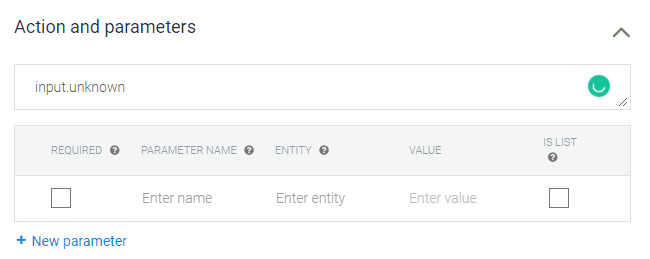
2. User Preference
There are some scenarios the end-user doesn’t want to wait for the bot to help with his issue or query and will be looking for a human agent. In that time the user should be given an option to directly talk to a human agent. This can be done with the help of menu options or rich messages.
Here is the example, when the user clicked on the button “Talk to Human” the bot handoff the conversation to the agent.
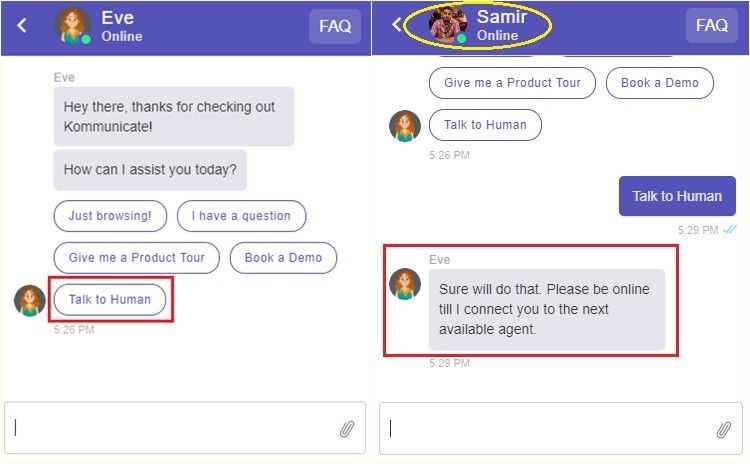
Below is the example for Dialogflow custom payload to add above shown menu option for transferring conversation to a human agent.

Here, talk_to_human is mentioned as a follow-up, and the payload is passed to it.

3. Based on Keyword Triggers
There are some cases where the bot should be able to handoff conversation to a human agent based on the keywords trigger. For example, when the user types words like a human, support, agent, etc.
Here’s an example where the user typed “human” and the bot handover conversation to a human agent.
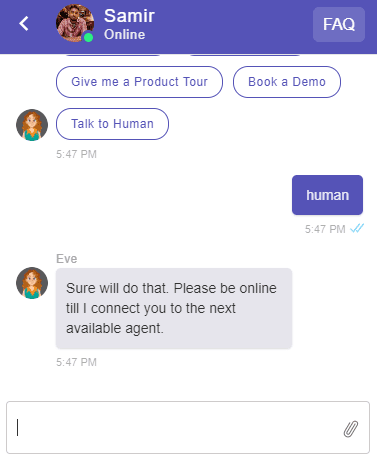
The corresponding Dialogflow intent and the custom payload are as follows –

If you’re using Kommunicate then there is a simple option to do the bot to human handoff. While integrating your bot in Kommunicate, you will be asked to enable the bot to human handoff in the last step.
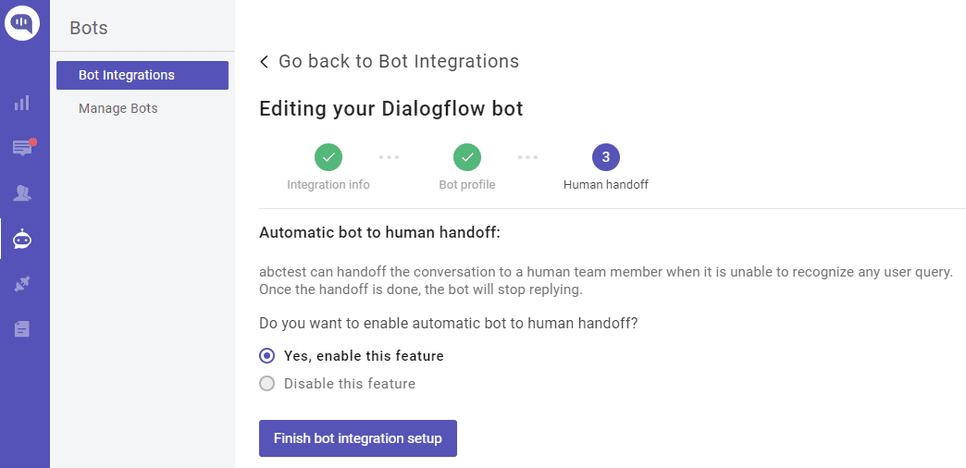
Best Practices for Bot to Human Hand-off
Ensuring a smooth transition from a bot to a human agent is crucial in maintaining user satisfaction and the effectiveness of the hand-off process.
Here are some best practices to consider –
- Maintain Context – It’s important that the human agent receives all relevant information from the bot’s previous interaction with the customer. This includes the customer’s query, any responses given, and the context in which they were provided.
- Recognize Cues Basis Keyword and Cues: Train your bot with machine learning algorithms to identify signals that a conversation should be escalated to a human. These might include specific phrases, sentiment indicators (like frustration), or repeated failed attempts to understand the user’s requests.
- Consistent Tone: The bot’s tone and language should closely match what users can expect from human agents. This coherence in communication helps in a consistent user experience when the transition occurs.
- Seamless Integration: Ensure that hand-off from bot to human is as seamless as possible. Avoid requiring users to repeat information by having the bot pass all necessary context directly to the human agent.
Conclusion
Implementing a bot to human hand-off in Dialogflow not only boosts the efficiency of your customer support system but also enhances the overall user experience by appropriately blending automated and human elements. This helps in using the best of both worlds—the speed and consistency of automated responses, and the nuanced understanding and empathy of human interaction. This balance increases customer satisfaction and optimizes resource allocation, making the support process more effective and adaptive to customer needs.

As a seasoned technologist, Adarsh brings over 14+ years of experience in software development, artificial intelligence, and machine learning to his role. His expertise in building scalable and robust tech solutions has been instrumental in the company’s growth and success.
At Kommunicate, we envision a world-beating customer support solution to empower the new era of customer support. We would love to have you onboard to have a first-hand experience with Kommunicate. You can signup here and start delighting your customers right away.


